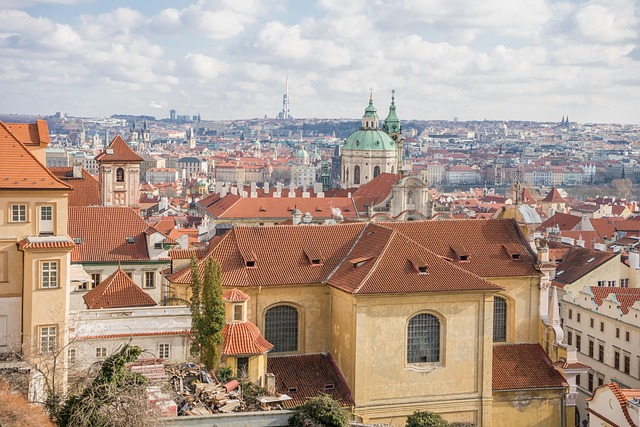Architectural Tourism: Beyond Famous Landmarks
Architectural tourism is reshaping how travelers engage with destinations worldwide, extending far beyond visits to iconic landmarks like the Eiffel Tower or Empire State Building. This growing niche attracts culture enthusiasts seeking deeper connections to places through their built environments. Today's architectural travelers are increasingly interested in understanding the stories behind buildings, exploring local construction traditions, and experiencing how architecture shapes daily life. The trend represents a meaningful shift from superficial sightseeing toward more immersive cultural appreciation, with travelers now planning entire itineraries around architectural themes and movements. As interest grows, destinations are responding with specialized tours, enhanced interpretation materials, and access to previously overlooked design treasures.

The Evolution of Building-Focused Travel
Architecture-centered travel has transformed dramatically over the decades. What began as aristocratic Grand Tours of classical monuments in the 18th century has evolved into a multifaceted travel experience accessible to enthusiasts of all backgrounds. The mid-20th century saw modernist buildings enter the tourism spotlight, while the late 1900s brought increased interest in industrial heritage and adaptive reuse projects. The Guggenheim Bilbao’s 1997 opening marked a turning point, demonstrating how a single architectural intervention could transform a destination’s tourism profile. Today, architectural tourism encompasses everything from brutalist building tours in former Soviet territories to desert modernism trails in Palm Springs. Social media has accelerated this trend, with photogenic structures becoming destinations in themselves, sometimes attracting controversy when historic neighborhoods become overwhelmed with visitors seeking the perfect architectural backdrop.
Beyond the Blockbusters: Finding Hidden Architectural Gems
While masterpieces by Frank Lloyd Wright or Antoni Gaudí rightfully draw crowds, seasoned architectural tourists are increasingly seeking lesser-known treasures. Secondary cities often contain remarkable architectural heritage without the crowds of major destinations. Neighborhoods like Bras Basah-Bugis in Singapore or Eixample beyond Gaudí’s works in Barcelona reward explorers with distinctive architectural character and local authenticity. Vernacular architecture—the everyday buildings created by local people using traditional techniques—offers perhaps the most genuine window into a region’s culture and history. From the trulli houses of Puglia to the wooden stave churches of Norway, these structures embody centuries of practical wisdom and cultural adaptation. Architectural festivals and open house events have also expanded worldwide, with programs like Open House London and the Chicago Architecture Biennial temporarily granting access to private buildings and hosting innovative installations that engage both visitors and residents.
How Technology Is Enhancing Architectural Exploration
Digital innovation has revolutionized how travelers engage with architecture. Augmented reality applications now overlay historical information onto existing streetscapes, revealing buildings’ original appearances or highlighting hidden details invisible to the naked eye. The Bloomberg Connects app, for example, offers architectural walking tours in multiple cities with expert commentary. Virtual reality experiences allow travelers to pre-visit spaces or experience structures that no longer exist. Meanwhile, specialized architecture podcasts make excellent companions for independent exploration, providing context and stories while visitors experience buildings firsthand. Online communities like Modernism Week’s social platforms connect architecture enthusiasts worldwide, facilitating knowledge sharing and travel planning. For photography enthusiasts, apps like Explorest and Architectural Digest’s city guides pinpoint optimal shooting locations and times for capturing remarkable structures in their best light. These technological tools have democratized architectural knowledge, making specialized information previously accessible only to academics available to curious travelers.
The Sustainability Question in Architectural Tourism
The growing popularity of architecture-focused travel raises important questions about sustainability. Overtourism threatens the very structures that draw visitors, with increased foot traffic accelerating deterioration of historic buildings not designed for mass visitation. Conservation organizations worldwide are implementing innovative solutions, including timed entry systems, virtual access options for fragile spaces, and spreading visitation across wider networks of sites. Architectural tourism also presents opportunities for preservation, as visitor interest generates revenue for restoration and maintenance of historic structures. The adaptive reuse movement—repurposing existing buildings rather than demolishing them—has created compelling destinations from former industrial facilities, religious buildings, and transportation infrastructure. The High Line in New York exemplifies this approach, transforming an abandoned railway into a public park that celebrates industrial heritage while creating new public space. Forward-thinking destinations are emphasizing regenerative tourism approaches that ensure architectural assets benefit local communities through job creation, skills preservation, and cultural pride.
Essential Resources for Architecture Enthusiasts
-
Architecture city guides from Phaidon, Blue Crow Media, and the Modern Architecture Travel Guide series provide curated itineraries beyond obvious landmarks
-
Organizations like Docomomo offer resources for locating significant modernist structures worldwide
-
The UNESCO World Heritage List includes over 1,000 sites with architectural significance, searchable by region and style
-
The “Architecture” category on Atlas Obscura reveals quirky and lesser-known buildings around the globe
-
Numerous cities offer specialized architecture passes that bundle admission to multiple design-focused sites
-
Local architecture centers in major cities provide exhibitions, walking tours, and insider recommendations
-
University architecture departments often maintain buildings of significance and may offer public tours
Creating Meaningful Architectural Journeys
Architectural tourism offers a powerful lens for understanding the world’s cultures, histories, and futures. The most rewarding experiences go beyond photographing famous facades to engage with spaces meaningfully—understanding their historical context, observing how light moves through rooms throughout the day, and noticing how local residents interact with their built environment. As this specialized form of cultural tourism continues to grow, it presents opportunities for deeper place attachment and cross-cultural understanding. Whether exploring grand monuments or humble village structures, architectural travel reminds us that buildings are not merely background scenery but living expressions of human creativity and cultural values that continue to shape our experiences decades or centuries after their creation.





